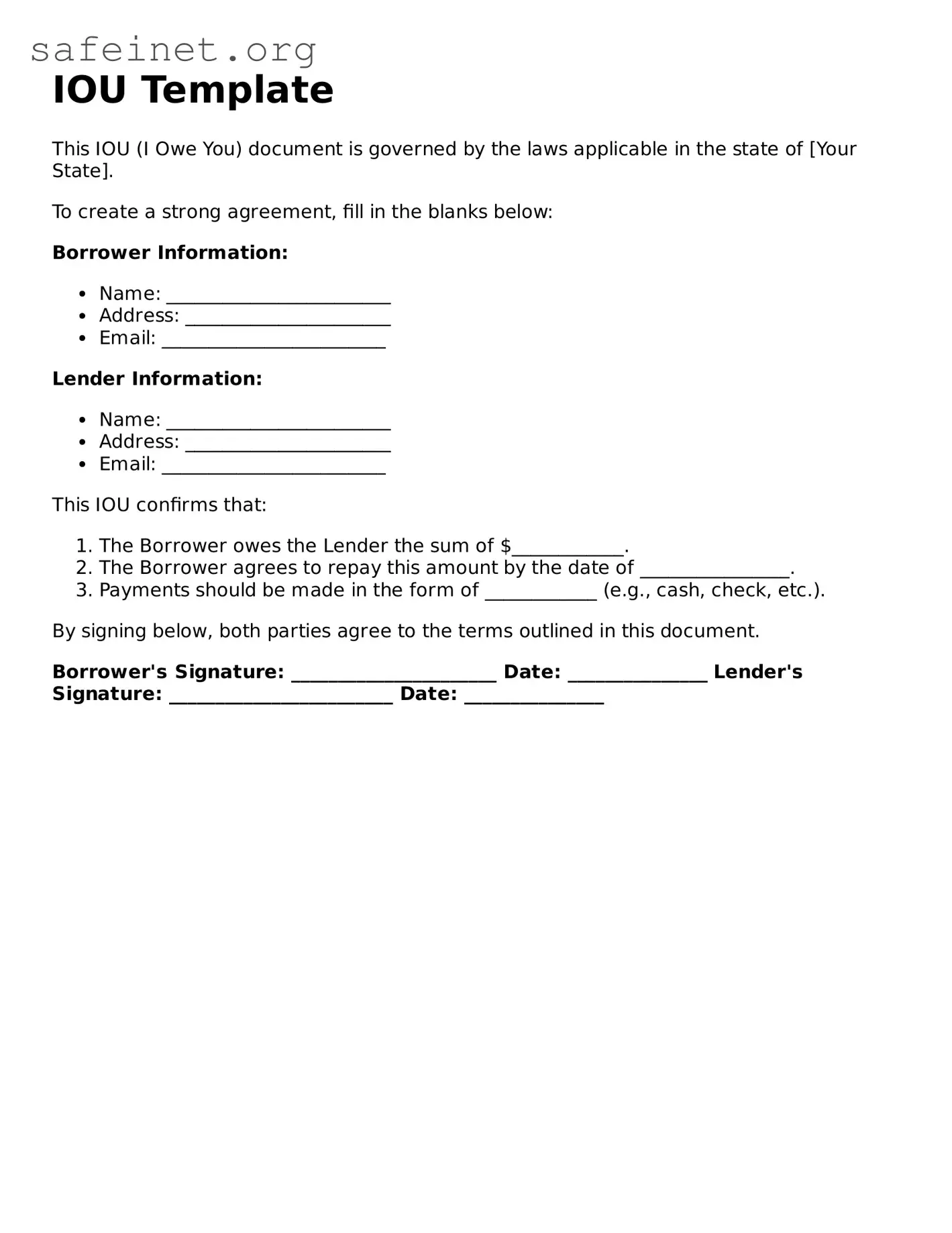One document similar to an IOU form is a promissory note. A promissory note is a written promise by one party to pay a certain amount of money to another party at a specified time or on demand. Like an IOU, it serves as a record of a debt; however, a promissory note often includes more formal terms, such as payment schedules and interest rates. While an IOU can be informal and simple, a promissory note typically holds more legal weight due to its structured nature.
Another comparable document is a loan agreement. This legal contract outlines the terms and conditions of a loan between the lender and borrower. While an IOU might simply state the amount owed, a loan agreement includes detailed terms regarding repayment, interest, and default scenarios. Loan agreements offer more protection to lenders since they define rights and responsibilities more clearly.
A personal check also bears similarities to an IOU form. Both documents signify an amount of money that one party owes to another. However, a check is a specific payment instrument that can be used to transfer funds directly from one bank account to another. Unlike an IOU, which often represents a promise to pay later, a check is a direct payment at the time it is written.
Similarly, a bill can be seen as a document akin to an IOU. A bill is an itemized statement of goods or services provided, along with the amount owed. While an IOU represents a general promise to pay, a bill specifies exactly what is being charged. Bills usually have due dates and can sometimes include the penalty for late payment.
Accounts receivable records often resemble an IOU as well. These records show the money owed to a business for services or goods provided on credit. Both documents track debts, but accounts receivable are typically maintained as part of a company’s financial records, reflecting amounts owed in a more structured context, often with payment terms and due dates.
Another relevant document is a receipt. When a transaction occurs, a receipt provides proof of payment. While an IOU can indicate that a payment is pending, a receipt serves as confirmation that a payment was made. Receipts are essential for keeping track of financial exchanges and can be used to validate claims in disputes.
A debt acknowledgment letter can serve a similar purpose to an IOU. This document is used to acknowledge a debt and its terms. Like an IOU, it confirms that money is owed, but it may also include details like the amount, date, and any interest conditions. A debt acknowledgment letter can provide additional context that an IOU might lack.
A lien waiver can also be parallel to an IOU form in certain contexts. While it primarily pertains to real estate transactions, a lien waiver releases a party’s right to claim a debt. Both documents address debts; however, a lien waiver explicitly relinquishes any claim to property as collateral, whereas an IOU merely acknowledges a debt without affecting ownership rights.
Finally, an installment agreement shares similarities with an IOU. An installment agreement outlines how a debt will be paid back in smaller, manageable payments over time. Like an IOU, it reflects an obligation to repay a debt, but it provides structured payment terms and conditions for repayment. This clarity can help both parties feel more secure in their financial arrangements.
